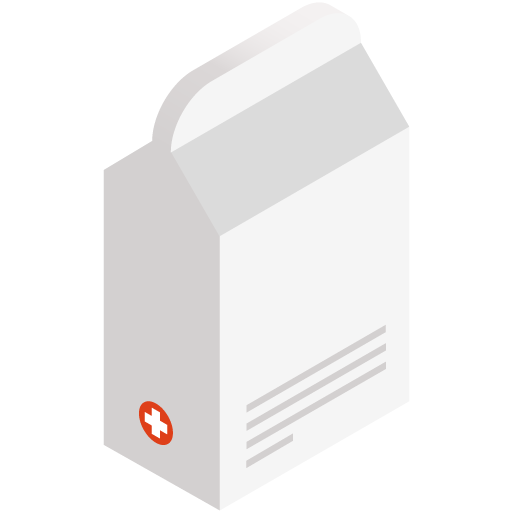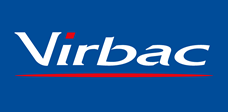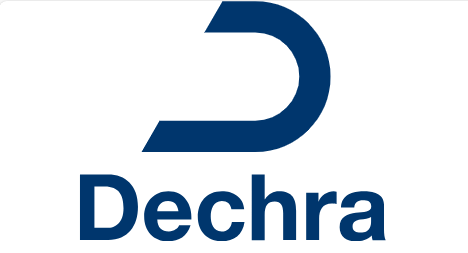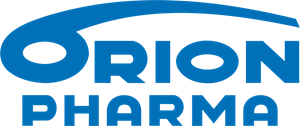Combination therapy
No results were found for your selected species
Phenocillin
Active substance
ATC code
Species
Chickens.
Indications
For the treatment and metaphylaxis of necrotic enteritis caused by Clostridium perfringens. The disease must have been currently diagnosed in the flock before metaphylactic use.
Dose to be administered and administration route
13.5 – 20 mg phenoxymethylpenicillin per kg body weight per day, corresponding to 17 – 25 mg of the product per kg body weight per day, for 5 days.
Method of administration: oral use, dissolve in drinking water and use within 12 hours. The maximum solubility is 100 g product per litre drinking water.
The following calculation may be used to determine the quantity in grams of the product to be added to 1000 litres of water:
To calculate correctly the amount of powder required, the use of calibrated weighing equipment is recommended. Taking into account that sick animals may drink less, it is recommended to start therapy with the highest authorised dose, to compensate for a possible lower intake of medicated water.
To ensure correct dosage, the body weight of the animals should be determined as accurately as possible to avoid under dosing.
No other source of drinking water should be available during the medication period.
In cases of altered drinking water consumption in chickens, the concentration should be adjusted so that the recommended dosage is achieved. After the end of the treatment period, the water supply system should be cleaned to avoid subsequent intake of sub-therapeutic amounts of the active substance.
Adverse reactions
Although no adverse reactions have been observed after the administration of the product, penicillins may cause vomiting, diarrhoea and alter gut flora by selecting resistant bacteria.
Dispensing
POM-VEMA Categorisation
SUMMARY OF PRODUCTS CHARACTERISTICS
1. NAME OF THE VETERINARY MEDICINAL PRODUCT
Phenocillin 800 mg/g powder for use in drinking water for chickens
2. QUALITATIVE AND QUANTITATIVE COMPOSITION
1 g powder contains:
Active substance:
Phenoxymethylpenicillin 800 mg
(corresponding to phenoxymethylpenicillin potassium 887 mg)
Excipients:
For the full list of excipients, see section 6.1.
3. PHARMACEUTICAL FORM
Powder for use in drinking water. White or almost white powder.
4. CLINICAL PARTICULARS
4.1 Target species
Chickens.
4.2 Indications for use, specifying the target species
For the treatment and metaphylaxis of necrotic enteritis caused by Clostridium perfringens. The disease must have been currently diagnosed in the flock before metaphylactic use.
4.3 Contraindications
Do not use in known cases of hypersensitivity to the active substance, other substances of the beta-lactam group or to any of the excipients.
4.4 Special warnings for each target species
None.
4.5 Special precautions for use
Special precautions for use in animals
Use of the product should be based on susceptibility testing of bacteria isolated from the animals on the farm. If this is not possible, therapy should be based on local (regional, farm level) epidemiological information about susceptibility of the target bacteria. The product should not be used to compensate for poor hygiene and management of the farm houses.
Use of the product deviating from the instructions given in the SPC may increase the prevalence of bacteria resistant to phenoxymethylpenicillin and may decrease the effectiveness of treatment with other penicillins, due to the potential for crossresistance. Official, national and regional antimicrobial policies should be taken into account when the product is used.
Special precautions to be taken by the person administering the veterinary medicinal product to animals
Penicillins, such as phenoxymethylpenicillin may cause hypersensitivity (allergy) following inhalation, ingestion or skin contact. Hypersensitivity to phenoxymethylpenicillin may lead to cross-sensitivity to other penicillins and cephalosporins and vice versa. Allergic reactions to these substances may occasionally be serious.
1. Do not handle this product if you know you are sensitised, or if you have been advised not to work with such preparations.
2. Handle this product with great care to avoid exposure, taking all recommended precautions.
3. If you develop symptoms following exposure such as a skin rash you should seek medical advice and show the doctor this warning. Swelling of the face, lips or eyes or difficulty with breathing, are more serious symptoms and require urgent medical attention.
Persons handling this product should avoid inhalation of any dust and contact with skin. Wear protective clothing, impervious gloves and either a disposable half mask respirator conforming to European Standard EN149 or a non-disposable respirator conforming to European Standard EN140 with a filter to EN143 when mixing and handling the product.
Hands and exposed skin should be washed thoroughly after use.
4.6 Adverse reactions (frequency and seriousness)
Although no adverse reactions have been observed after the administration of the product, penicillins may cause vomiting, diarrhoea and alter gut flora by selecting resistant bacteria.
4.7 Use during pregnancy, lactation or lay
Studies in laboratory animals and humans have not produced any evidence of effects on reproductive function or foetal development.
4.8 Interaction with other medicinal products and other forms of interaction
This veterinary medicinal product should not be combined with bacteriostatic antibiotics.
4.9 Amounts to be administered and administration route
13.5 – 20 mg phenoxymethylpenicillin per kg body weight per day, corresponding to 17 – 25 mg of the product per kg body weight per day, for 5 days.
Method of administration: oral use, dissolve in drinking water and use within 12 hours. The maximum solubility is 100 g product per litre drinking water.
The following calculation may be used to determine the quantity in grams of the product to be added to 1000 litres of water:
mean body weight
mg product/kg number of g x of individual x mg
body weight/day animals product/
animals (kg) = product =
![]() 1000 l
1000 l
Total water consumption (litre) of the group to be treated /litre water on the previous day
To calculate correctly the amount of powder required, the use of calibrated weighing equipment is recommended. Taking into account that sick animals may drink less, it is recommended to start therapy with the highest authorised dose, to compensate for a possible lower intake of medicated water.
To ensure correct dosage, the body weight of the animals should be determined as accurately as possible to avoid under dosing.
No other source of drinking water should be available during the medication period. In cases of altered drinking water consumption in chickens, the concentration should be adjusted so that the recommended dosage is achieved. After the end of the treatment period, the water supply system should be cleaned to avoid subsequent intake of sub-therapeutic amounts of the active substance.
4.10 Overdose (symptoms, emergency procedures, antidotes), if necessary
Phenoxymethylpenicillin has a high therapeutic ratio. The administration of medicated drinking water at two and five times the recommended therapeutic dose for twice the recommended duration of treatment, did not reveal any adverse effects. In some individuals, administration of five times the recommended therapeutic dose for twice the recommended duration of treatment led to an increase in water consumption, a decrease in feed intake and watery faeces.
4.11 Withdrawal period(s)
Meat and offal: 2 days. Eggs: zero days.
5. PHARMACOLOGICAL PROPERTIES
Pharmacotherapeutic group: Beta-lactam antibacterials, penicillins. ATCvet code: QJ01CE02.
5.1 Pharmacodynamic properties
Phenoxymethylpenicillin is a narrow-spectrum penicillin with activity mainly against gram-positive bacteria.
Phenoxymethylpenicillin, as all penicillins, exerts a bactericidal action, on bacteria during the stage of active multiplication. It forms an irreversible binding to penicillinbinding proteins (PBPs), enzymes that facilitate the formation of cross-links of peptidoglycan chains in the synthesis of the bacterial cell wall. This results in abnormal cell growth and cytolysis of the cell.
Phenoxymethylpenicillin is an acid-stable derivative of benzylpenicillin and has a largely comparable spectrum of activity.
Development of resistance is mainly based on the formation of beta-lactamase, an enzyme that breaks open the beta-lactam ring rendering the antibiotic ineffective. Cross-resistance exists between phenoxymethylpenicillin and other beta-lactam antibiotics.
Minimum Inhibitory Concentrations (MICs) of phenoxymethylpenicillin were determined against Clostridium perfringens isolates from clinical cases of necrotic enteritis in chickens during 1998 and 1999. The MIC for C. perfringens isolated from faeces, liver and caecum samples were < 0.01 to 0.05 µg/ml.
5.2 Pharmacokinetic particulars
The most important advantage of phenoxymethylpenicillin in comparison with penicillin G is that it is more stable in an acid environment and it is therefore better absorbed from the gastrointestinal tract.
Following oral use, phenoxymethylpenicillin for the most part escapes decomposition by gastric juices, as it is stable at a low pH.
Phenoxymethylpenicillin is well distributed over most of the tissues, leading to a high concentration in the kidneys and the liver. Phenoxymethylpenicillin is partially decomposed in the gastrointestinal tract. A small portion of the absorbed amount is metabolised in the body. For the most part, phenoxymethylpenicillin is excreted in unaltered active form in urine and faeces.
Following a single administration of the product in chickens at a dose of 15 mg of phenoxymethylpenicillin potassium / kg body weight by oral gavage, maximum plasma concentrations of 0.40 ± 0.15 mg / l were achieved within 1.7 ± 1.0 hours after administration. Phenoxymethylpenicillin is well absorbed and has an absolute bioavailability of 69%.
6. PHARMACEUTICAL PARTICULARS
6.1 List of excipients
Potassium dihydrogen phosphate Silica colloidal anhydrous
6.2 Major incompatibilities
Do not mix with other veterinary medicinal products.
Contact of penicillin containing solutions with metals and the use of metal systems for their administration is known to adversely influence penicillin stability. Therefore the use of such systems should be avoided and they should not be used for the storage of solutions.
6.3 Shelf life
Shelf life of the veterinary medicinal product as packaged for sale: 3 years.
Shelf life after first opening the immediate packaging: 3 months.
Shelf life after dilution or reconstitution according to directions: 12 hours.
6.4 Special precautions for storage
This veterinary medicinal product does not require any special storage conditions.
6.5 Nature and composition of immediate packaging
Bags consisting of the following materials: on the outside a polyethylene terephtalate layer, inside layers of aluminium and polyamide and an inner layer of polyethylene. Pack sizes are 100 g, 10x 100 g, 250 g, 500 g and 1000 g.
Bags consisting of the following materials: on the outside a paper layer, inside layers of polyethylene and aluminium and an inner layer of polyethylene. Pack sizes are 1000 g and 2500 g.
Not all pack sizes may be marketed.
6.6 Special precautions for the disposal of unused veterinary medicinal product or waste materials derived from the use of such products
Any unused veterinary medicinal product or waste materials derived from such veterinary medicinal products should be disposed of in accordance with local requirements.
7. MARKETING AUTHORISATION HOLDER
Eurovet Animal Health B.V.
Handelsweg 25 5531 AE Bladel
The Netherlands
8. MARKETING AUTHORISATION NUMBER
Vm 16849/4054
9. DATE OF FIRST AUTHORISATION
25 January 2016
10. DATE OF REVISION OF THE TEXT
March 2021
Approved 31 March 2021


| Art. Nr. | 16849/4054 |
|---|---|
| EAN | 8714225158294 |
 TRUSTED SOURCE
TRUSTED SOURCE








